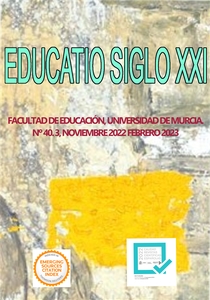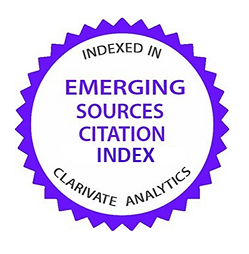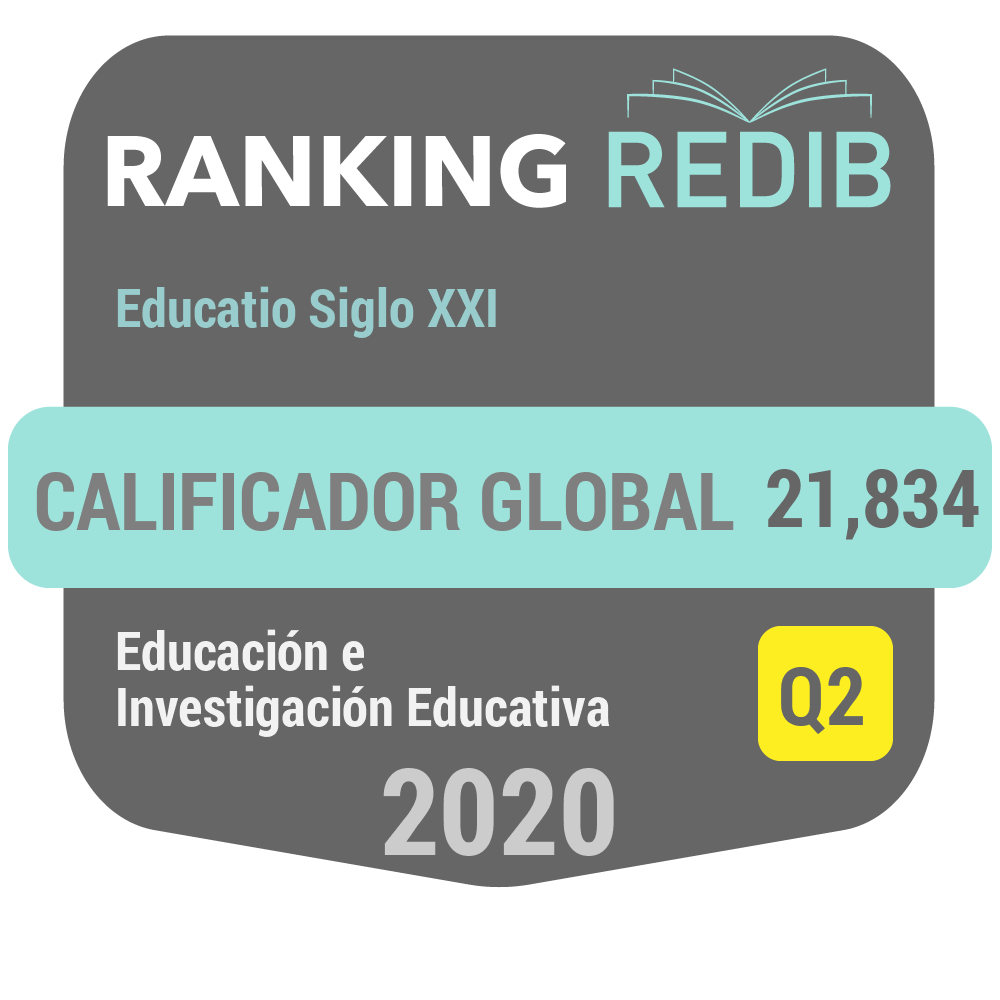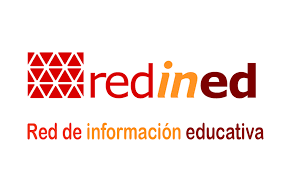The reset of student participation: An analysis of participation tools, dynamics and perceptions in a blended learning context
Abstract
Achieving student participation and involvement in the development of each subject is a long-standing challenge in higher education. On the basis of this premise, this article focuses on studying the levels of student participation in virtual and face-to-face education environments in the third year of a DEGREE at INSTITUTION. More specifically, our analysis aims to compare students' general impressions of their participation in both contexts (on-site teaching and virtual teaching during the university closure due to the COVID-19 pandemic) and to probe their opinion on the participation tools used by the teaching staff with a focus on which of those tools they consider most and least useful in each context. To achieve these aims, a two-stage study combining quantitative and qualitative data was developed through two coalescent data collection procedures: an online questionnaire responded by 47 out of 70 students and a subsequent virtual discussion group with five students. The analysis of the information collected consolidates participation as a problematic aspect in the teaching-learning process in both environments, although it also shows a year-on-year improvement in virtual contexts. Similarly, the results show a widespread support of the instruments used by teachers to boost the levels of student participation in both online and face-to-face sessions.
Downloads
-
Abstract1073
-
PDF (Español (España))561
References
Abuid, B. A. (2014). A student participation assessment scheme for effective teaching and learning. Learning and Teaching in Higher Education: Gulf Perspectives, 11(1), 1-27.
Álvarez, J., Usán, P. Estrada, N. y Murillo, V. (2020). Inclusión de metodologías activas en el alumnado de enseñanza superior universitaria. Revista Iberoamericana de Psicología el Ejercicio y el Deporte, 15(3), 144-149.
Barría, J., Scheihing, E. y Parra, D. (2014). Visualizing Student Participation in a Collaborative Learning Environment. En F. Cena, A. S. da Silva, y C. Trattner (Eds.), Late-breaking Results, Doctoral Consortium and Workshops Proceedings of the 25th ACM Hypertext and Social Media Conference. CEUR Workshop Proceedings.
Bekeering, E. y Ward, T. (2021). Class Participation and Student Performance: A Follow-up Study. Information Systems Education Journal, 19(4), 77-87.
Benítez, M. G., Barajas, J. I. y Noyola, R. (2016). La utilidad del foro virtual para el aprendizaje colaborativo, desde la opinión de los estudiantes. Campus Virtuales, 5(2), 122-133.
Bento, R. y Schuster, C. (2003). Participation: The online challenge. En A. Aggarwal (ed.) Web-based education: Learning from experience (pp. 156-164). Information Science Publishing. http://dx.doi.org/10.4018/978-1-59140-102-5.ch010
Berge, Z. L. (1999). Conceptual frameworks in distance training and education. En D. Schreiber y Z. L. Berge (Eds.), Distance training: how innovative organizations are using technology to maximize learning and meet business objectives (pp. 19–36). Jossey-Bass.
Boada, A. y Mayorca, R. (2019). Importancia de la participación activa de estudiantes virtuales a través de los foros- debates en plataformas digitales. Memorias VI Simposio Nacional de Formación con Calidad y Pertinencia (pp. 431-437). Servicio Nacional de Aprendizaje SENA.
Buil, I., Hernández, B., Sesé, F. J. y Urquizu, P. (2012). Los foros de discusión y sus beneficios en la docencia virtual: recomendaciones para un uso eficiente. Innovar, 22(43), 131-144.
Czekanski, K. E. y Wolf, Z. R. (2013). Encouraging and Evaluating Class Participation. Journal of University Teaching & Learning Practice, 10(1), 1-12. https://ro.uow.edu.au/jutlp/vol10/iss1/7/
De la Torre, S. (2009). La Universidad que queremos: Estrategias creativas en el aula universitaria. Revista Digital Universitaria, 10(12), 1-17.
De Obesso, M. y Núñez-Canal, M. (7-8 de octubre de 2020). El modelo educativo híbrido: una respuesta necesaria de la enseñanza universitaria a partir de la Covid-19. Congreso universitario internacional sobre contenidos, innovación, investigación y docencia (CUICIID 2020), Madrid, España.
Echiverri, L. L., Shang, H. y Xu, K. (2-5 de junio de 2020). Class Discussion and Class Participation: Determination of Their Relationship. 6th International Conference on Higher Education Advances (HEAd’20), Valencia, España. http://dx.doi.org/10.4995/HEAd20.2020.11121
Elisondo, R. C. (2018). Creatividad y educación: llegar con una buena idea. Creatividad y Sociedad, 27, 145-166.
Estrada-Araoz, E. G., Gallegos-Ramos, N., Mamani-Uchasara, H. y Huaypar-Loayza, K. (2020). Actitud de los estudiantes universitarios frente a la educación virtual en tiempos de la pandemia de COVID-19. Revista Brasileira De Educação Do Campo, 5. https://doi.org/10.20873/uft.rbec.e10237
Fernández-Torres, M. J., Chamizo-Sánchez, R. C. y Sánchez-Villarrubia, R. S. (2021). Universidad y pandemia: la comunicación en la educación a distancia. Ámbitos. Revista Internacional de Comunicación, (52), 156-174. https://dx.doi.org/10.12795/Ambitos.2021.i52.03
Guerra-Santana, M., Rodríguez-Pulido, J. y Artiles-Rodríguez, J. (2019). Aprendizaje colaborativo: experiencia innovadora en el alumnado universitario. Revista de Estudios y Experiencias en Educación, 18(36), 269-281. https://doi.org/10.21703/rexe.20191836guerra5
Hidalgo, N. y Perines, H. (2018). Dar voz a los protagonistas: la participación estudiantil en el proceso de enseñanza-aprendizaje. Revista Educación, 42(2), 438-464. https://doi.org/10.15517/revedu.v42i2.27567
Hodges, C., Moore, S., Lockee, B., Trust, T. y Bond, A. (2020). The Difference Between Emergency Remote Teaching and Online Learning. Educational Review. https://er.educause.edu/articles/2020/3/the-difference-between-emergency-remote-teaching-and-online-learning
Hrastinski, S. (2008). What is online learner participation? A literature review. Computers & Education, 51(4), 1755-1765. https://doi.org/10.1016/j.compedu.2008.05.005
Imbernón, F. y Medina, J. L. (2008). Metodología participativa en el aula universitaria. La participación del alumnado. Octaedro.
Lukas-Mujika, J.F., Santiago-Etxeberria, K., Lizasoain-Hernández, L. y Etxeberia-Murgiondo, J. (2017). Percepciones del alumnado universitario sobre la evaluación. Bordón. Revista De Pedagogía, 69(1), 103-122. https://doi.org/10.13042/Bordon.2016.43843
Martínez-Uribe, C. H. (2008). La educación a distancia: sus características y necesidad en la educación actual. Educación, 17(33), 7-27.
Merlo Torres, M. A., Cross Pacheco, I., Portela Bens, S., Rodríguez Jiménez, M. E., García Angulo, A., Centeno Cuadros, A., Arias Pérez, A. y Rebordinos González, L. (2019). Utilización de Google Slides como herramienta para incentivar la participación del alumnado en el aula. Proyectos de Innovación Docente 2018-2019. Universidad de Cádiz.
Miguel-Román, J. A. (2020). La educación superior en tiempos de pandemia: una visión desde dentro del proceso formativo. Revista Latinoamericana de Estudios Educativos (México), vol. 50, (Número especial), 13-40. https://doi.org/10.48102/rlee.2020.50.ESPECIAL.95
Molinari, A. V. y Sánchez-Rosas, J. (2018). Compromiso comportamental: propuestas para la evaluación de participación social académica. Contextos de Educación, 25, 99-109. http://www2.hum.unrc.edu.ar/ojs/index.php/contextos/article/view/768
Moliní-Fernández, F. y Sánchez-González, D. (2019). Fomentar la participación en clase de los estudiantes universitarios y evaluarla. REDU: Revista de Docencia Universitaria, 17(1), 211-227. https://doi.org/10.4995/redu.2019.10702
Mundelsee, L. y Jurkowski, S. (2021). Think and pair before share: Effects of collaboration on students' in-class participation. Learning and Individual Differences, 88, https://doi.org/10.1016/j.lindif.2021.102015
Rinaudo, M. C., Donolo, D. y Chiecher, A. (2002). La participación en clases universitarias. Evaluación desde la perspectiva del alumno. Cuadernos de la Facultad de Humanidades y Ciencias Sociales, 15, 77-88.
Roig-Vila, R., Urrea-Solano, M. y Merma-Molina, G. (2021). La comunicación en el aula universitaria en el contexto del COVID-19 a partir de la videoconferencia con Google Meet. RIED. Revista Iberoamericana de Educación a Distancia, 24(1), pp. 197-220. http://dx.doi.org/10.5944/ried.24.1.27519
Rueda-Pineda, E., Mares-Cárdenas, G., Gonzáles-Beltrán, L. F., Rivas-García, O. y Rocha-Leyva, H. (2017). La participación en clase en alumnos universitarios: factores disposicionales y situacionales. Revista Iberoamericana de Educación, 74(1), 149-162. https://doi.org/10.35362/rie741632
Sagarra, S. (2021). COVID-19: aportes y limitaciones de la enseñanza virtual asíncrona (una experiencia de educación media superior). Educación En Ciencias Biológicas, 6(1). https://doi.org/10.36861/RECB.6.1.2
Sánchez-Hernández, D. I., Vez-López, E. y García-Barrios, Y. (2021). Factores que desmotivan la participación en clase de los alumnos de inglés como lengua extranjera en una escuela de idiomas. Gist Education and Learning Research Journal, 22, 147-172. https://doi.org/10.26817/16925777.860
Vonderwell, S. y Zachariah, S. (2014). Factors that influence participation in online learning. Journal of Research on Technology in Education, 38(2), 213-230. https://doi.org/10.1080/15391523.2005.10782457
Weaver, R. R. y Qi, J. (2005). Classroom organization and participation: college students’ perceptions. The Journal of Higher Education, 76(5), 570-601. https://doi.org/10.1080/00221546.2005.11772299
Williams, B. (2004). Participation in on-line courses – how essential is it? Educational Technology and Society, 7(2), 1-8.
Copyright (c) 2022 Servicio de Publicaciones de la Universidad de Murcia

This work is licensed under a Creative Commons Attribution-NonCommercial-NoDerivatives 4.0 International License.
Original work publishes in this journal is subject to the following terms:
1. Murcia University Press (the publishing house) holds the copyright of the publishes work, and favours and allows their reutilization under the use license stated in point 2.
© Servicio de Publicaciones, Universidad de Murcia, 2015
2. Work is published in the electronic edition under a license (Creative Commons Reconocimiento-NoComercial-SinObraDerivada 4.0 España (legal text). They can be copied, used, disseminated, transmitted and publicly presented, as long as: i) authorship and original publication source is acknowledged (journal, publishing house and URL of the work); ii) are not used for commercial purposes; iii) the existence and specifications of this use license is stated.
3. Conditions for self-archive. Authors are allowed and encouraged to disseminate electronically the pre-pint (before review) and/or post-print (accepted for publication) versions of their work before their publication since that favours earlier circulation and dissemination resulting in an increased chance for the authors to be cited and for the work to reach a bigger share of the academic community. Colour: RoMEO: green.







